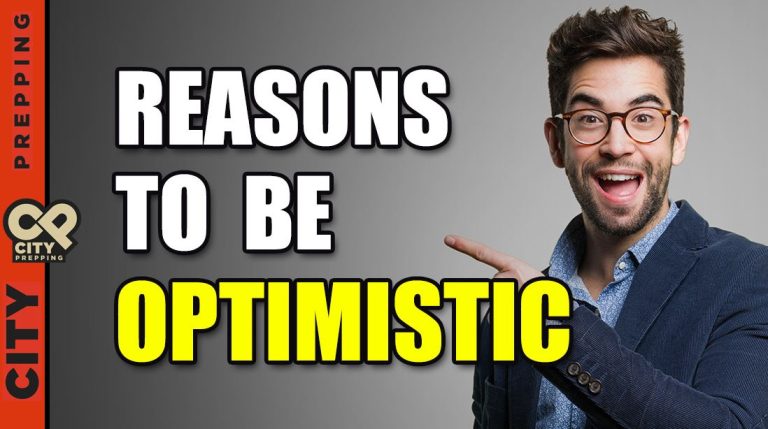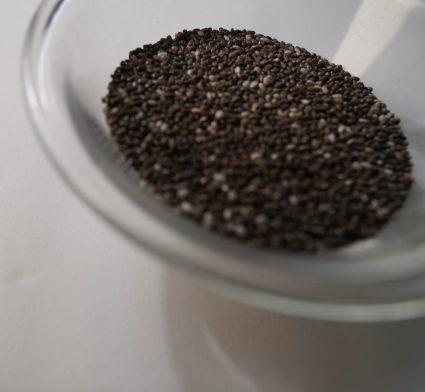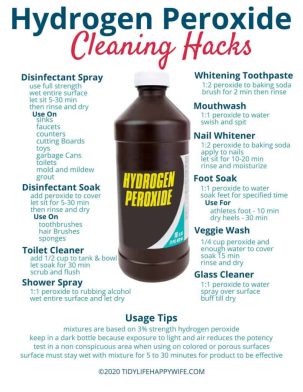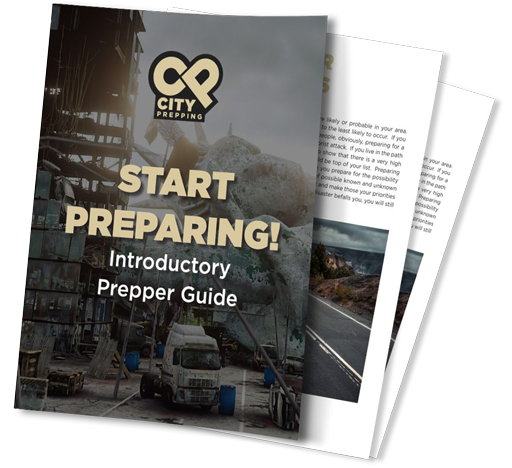 Many of the indicators that alarmists indicate to try and show that the stock market collapse is inevitable may not be the most useful indicators. When we look at the big picture, the 30,000-foot view of the economy, there’s less attention we have to give to any specific indicator. A single indicator or a handful of indicators can, after all, signify nothing but a smaller trend. Volatility indexes, investor sentiment, margin-to-debt ratios, the Buffet indicator, and all the other indications examined in the first video of this series are good for their parts, but they may not indicate a whole. Think of all the small indicators as individual pieces of the larger whole. Just as you might see dark clouds rolling in above you, the wind may pick up, and you may hear thunder and see lightning, it is no guarantee that you will get a drop of rain, let alone a flood. When you get enough indicators pointing to the same bad thing, you have to pay attention; but you also need to keep perspective.
When we just want to feel the pulse of the economy and take its temperature to get a general idea of how it’s doing, we can see more clearly the indicators that things will likely be alright, the historical context rather than the minutiae of the moment, and the real challenges that we face. Such a wide-angle, overall view of the economy reveals some positives and a clearer picture of the challenges we still face. From a macro viewpoint, we can see the government’s willingness to encourage a recovery, a virus that, at least for now, seems to be receding. We see businesses realigning themselves to new realities. We see businesses failing, but we also see new businesses emerging. When we take the pulse and temperature of the economy as a whole, it seems to be doing well enough. It is, perhaps, possible for us to ignore a few of the gloomy, downward-pointing indicators in favor of a holistic view of our economic health. When we take the US economy’s pulse and temperature, the heartbeat is getting more robust, and the temperature appears to be returning to normal, even heating up a bit.
Sick & Sluggish Economy Recovers
Many of the indicators that alarmists indicate to try and show that the stock market collapse is inevitable may not be the most useful indicators. When we look at the big picture, the 30,000-foot view of the economy, there’s less attention we have to give to any specific indicator. A single indicator or a handful of indicators can, after all, signify nothing but a smaller trend. Volatility indexes, investor sentiment, margin-to-debt ratios, the Buffet indicator, and all the other indications examined in the first video of this series are good for their parts, but they may not indicate a whole. Think of all the small indicators as individual pieces of the larger whole. Just as you might see dark clouds rolling in above you, the wind may pick up, and you may hear thunder and see lightning, it is no guarantee that you will get a drop of rain, let alone a flood. When you get enough indicators pointing to the same bad thing, you have to pay attention; but you also need to keep perspective.
When we just want to feel the pulse of the economy and take its temperature to get a general idea of how it’s doing, we can see more clearly the indicators that things will likely be alright, the historical context rather than the minutiae of the moment, and the real challenges that we face. Such a wide-angle, overall view of the economy reveals some positives and a clearer picture of the challenges we still face. From a macro viewpoint, we can see the government’s willingness to encourage a recovery, a virus that, at least for now, seems to be receding. We see businesses realigning themselves to new realities. We see businesses failing, but we also see new businesses emerging. When we take the pulse and temperature of the economy as a whole, it seems to be doing well enough. It is, perhaps, possible for us to ignore a few of the gloomy, downward-pointing indicators in favor of a holistic view of our economic health. When we take the US economy’s pulse and temperature, the heartbeat is getting more robust, and the temperature appears to be returning to normal, even heating up a bit.
Sick & Sluggish Economy Recovers
 Undoubtedly, the most damaging thing that occurred to the world’s economies was the COVID-19 virus. Many countries closed down entirely; many remain more or less closed to this day. Manufacturing slowed, leisure and business travel ground to a halt, events were canceled, and more. Many businesses folded. Others changed the way they operate to face the new realities. Though it may feel very personal and local to many, every nation around the world was affected somehow. The International Monetary Fund had to revise its estimates of global growth considerably and further projects 2021 to end almost six and a half percentage points lower than pre-Covid days.
Many will be wearing masks, washing hands, practicing physical distancing, and getting vaccinated against the virus. The silver lining is that the global scientific community came together to share information, quickly sequenced the virus’s DNA, determined specific spike proteins to target, and developed an mRNA vaccine based upon years of research on mRNA delivery methods.
While the virus appears to be still mutating, a topic I will cover in a future video, the virus’s infection rate and mortality rate appear to be dropping around the world. Between the heightened safety practices, vaccinations, and those who have recovered and developed some immunity, we seem to be turning a global corner on this particular COVID-19. As consumer confidence increases along with a healthy workforce and increased manufacturing and trade, economies will return to or soar beyond their pre-pandemic growth numbers. We will see an increase in optimism, movement, and spending, which bodes very well for the economy.
People have understandably been holding their purse strings tightly. Job insecurities and being forced to reduce spending on out-of-the-home entertainment and meals realigned, at least temporarily, the American spending habits. For the first time in many years, personal consumer debt decreased as people applied their extra assets and stimulus checks to indebtedness. That’s great for the average consumer, but it doesn’t dramatically stoke the fires of a thriving economy. Yet, as the pandemic recedes, consumers worldwide will be better positioned to spend, spend, spend. This could cause manufacturing, trade, and consumption to increase dramatically. That’s the best news we have had for several years for the stock market.
Traditional Industries Reopen
Undoubtedly, the most damaging thing that occurred to the world’s economies was the COVID-19 virus. Many countries closed down entirely; many remain more or less closed to this day. Manufacturing slowed, leisure and business travel ground to a halt, events were canceled, and more. Many businesses folded. Others changed the way they operate to face the new realities. Though it may feel very personal and local to many, every nation around the world was affected somehow. The International Monetary Fund had to revise its estimates of global growth considerably and further projects 2021 to end almost six and a half percentage points lower than pre-Covid days.
Many will be wearing masks, washing hands, practicing physical distancing, and getting vaccinated against the virus. The silver lining is that the global scientific community came together to share information, quickly sequenced the virus’s DNA, determined specific spike proteins to target, and developed an mRNA vaccine based upon years of research on mRNA delivery methods.
While the virus appears to be still mutating, a topic I will cover in a future video, the virus’s infection rate and mortality rate appear to be dropping around the world. Between the heightened safety practices, vaccinations, and those who have recovered and developed some immunity, we seem to be turning a global corner on this particular COVID-19. As consumer confidence increases along with a healthy workforce and increased manufacturing and trade, economies will return to or soar beyond their pre-pandemic growth numbers. We will see an increase in optimism, movement, and spending, which bodes very well for the economy.
People have understandably been holding their purse strings tightly. Job insecurities and being forced to reduce spending on out-of-the-home entertainment and meals realigned, at least temporarily, the American spending habits. For the first time in many years, personal consumer debt decreased as people applied their extra assets and stimulus checks to indebtedness. That’s great for the average consumer, but it doesn’t dramatically stoke the fires of a thriving economy. Yet, as the pandemic recedes, consumers worldwide will be better positioned to spend, spend, spend. This could cause manufacturing, trade, and consumption to increase dramatically. That’s the best news we have had for several years for the stock market.
Traditional Industries Reopen
 Travel for both leisure and business, big oil, transportation of goods and people, and entertainment will reopen once the pandemic recedes behind us. They will come roaring back. Americans tired of being cooped up at home and heavily laden with unused vacation time will venture from their homes into the sunlight. When people feel safe enough to travel, they will. Already, many investors are purchasing stock in hotel chains, as they expect an increase in bookings and higher profits. Already, the RV industry has received an unexpected boost because of the pandemic.
The essential industries to reopen in the travel sector are leisure, business, and events. When workers feel comfortable returning to the road, conferences will begin again. A decent-sized conference generates millions in revenue and employs thousands–from the rideshare driver to the catering crew to event coordinators to hotel staff. Even the wedding and event industry’s return will be like gasoline on the fire of the economy. Tying the knot was a 55 billion dollar industry pre-Covid.
Many industries will realize an immediate gain and uptick in business once Americans feel safe to venture out again to the office or to a concert or a wedding. These are contingent upon confidence. Suppose the infection rate continues to drop and the vaccination rate continues to go up. In that case, if treatments increase in effectiveness, confidence will return, and some, not all, traditional businesses will return. With the upswing of business will come profits, and profits drive shareholder value and kick the stock market into high gear.
New Businesses Will Emerge
Travel for both leisure and business, big oil, transportation of goods and people, and entertainment will reopen once the pandemic recedes behind us. They will come roaring back. Americans tired of being cooped up at home and heavily laden with unused vacation time will venture from their homes into the sunlight. When people feel safe enough to travel, they will. Already, many investors are purchasing stock in hotel chains, as they expect an increase in bookings and higher profits. Already, the RV industry has received an unexpected boost because of the pandemic.
The essential industries to reopen in the travel sector are leisure, business, and events. When workers feel comfortable returning to the road, conferences will begin again. A decent-sized conference generates millions in revenue and employs thousands–from the rideshare driver to the catering crew to event coordinators to hotel staff. Even the wedding and event industry’s return will be like gasoline on the fire of the economy. Tying the knot was a 55 billion dollar industry pre-Covid.
Many industries will realize an immediate gain and uptick in business once Americans feel safe to venture out again to the office or to a concert or a wedding. These are contingent upon confidence. Suppose the infection rate continues to drop and the vaccination rate continues to go up. In that case, if treatments increase in effectiveness, confidence will return, and some, not all, traditional businesses will return. With the upswing of business will come profits, and profits drive shareholder value and kick the stock market into high gear.
New Businesses Will Emerge
 The COVID-19 experience has caused some businesses to shutter their windows and close their doors forever. Many were operating on thin margins already in the months and years before the pandemic. The sudden slow down or halt in business coupled with the lack of resources and ingenuity to realign business models, if possible, caused them to fold. Some of the major businesses that suffered significant losses, which I didn’t mention earlier, were men’s suits, buffet-style restaurants, commercial real estate like malls, and movie theatres.
Other businesses, though, emerged. Video conferencing, online education providers, prepared food delivery, grocery delivery, online shopping, online payment services all gained. With more people at home, big chain hardware stores gained from do-it-yourself remodelers. Even online pet stores rushed to IPO and were rewarded with 100% stock gains. Another positive was industries for preppers – power generators, food, body armor, and medical mask suppliers realized black Friday sales levels. Power outages, a pandemic, repeated natural disasters, and inclement weather brought many to our community. People are starting to realize that placing their trust in the government or big business when times get tough may not be the right choice.
We aren’t likely to see a complete return to the 5-day commute to large office buildings, as more Americans have been forced to recognize and realize the potential of remote working. We aren’t likely to see the men’s suits and tie industry come roaring back. Admittedly, I’m not too broken up about that. I hate ties. I also think movie theaters will struggle somewhat. It is undeniable, though, that these newly expanded businesses will continue to thrive. This will create new opportunities and new markets. This will keep the stock market churning, even if not in traditional directions.
A Newish Deal
As Ernest Benn once said, “Politics is the art of looking for trouble, finding it everywhere, diagnosing it incorrectly, and applying the wrong remedies.” That’s probably true when it comes to the economy and the stock market. The Secretary of the Treasury, Janet Yellen, will dictate much of the monetary policy in the coming years, but she finds herself without many tools left at her disposal. Does she raise the interest rates that have been lowered to historic lows and left there so long to fling wide the valve of the economy? This would assuredly result in inflation during a time when the economy needs to recover. Does she and the Administration increase the national debt to never-before-seen levels by borrowing even more to infuse money directly into the economy and consumer pockets? This will result in a dramatic increase of debt to GDP and may threaten America’s future creditworthiness. Does America, in its urgency to get big business rolling again, outsource or move jobs overseas? So many factors are at play, but we find ourselves with most of the tools in the Fed’s toolbox used up.
In September of 2019, the Federal Reserve began conducting its fourth quantitative easing operation since the 2008 financial crisis. In March of 2020, it announced approximately $700 billion in new quantitative easing via asset purchases to support US liquidity in response to the COVID-19 pandemic. As of mid-summer 2020, this resulted in an additional $2 trillion in assets on the Federal Reserve books. A new bail-out package will equal or exceed that. Unfortunately, the government has to spend money to make money, but we are spending money that we may not be making back in this case. The US government has been printing more money and spending more money far more rapidly than the Gross Domestic Product has expanded. This has set things out of kilter.
It would be beneficial to look at the First and Second New Deals of the 1930s to determine what direction we are likely to go. The first was an “alphabet soup” of relief that’s not too dissimilar to what we see with the Coronavirus relief packages. The second offered further legislative reforms that actually created the basis for our modern social welfare system like Social Security. The second also saw a massive investment in infrastructure. The New Deals were made up of the three Rs–Relief, Recovery, & Reform. Sound familiar? We seem to be heading in the same direction.
One thing is assured, we are in the infrastructure phase of our own Newish Deal. The Biden administration will be pushing for as large of an infrastructure bill as they can. Democrats are proposing as much as $3 trillion in new spending as part of what they envision as a wide-ranging job and infrastructure package that would be the foundation of Biden’s “Build Back Better” program. It would be one of the most enormous infrastructure bills in history, from increasing broadband accessibility to fixing bridges and roads to revitalizing the energy grid and incentivizing green energy. Already lobbyists are lining up for and against it, and the ink hasn’t even been set to paper. The government is in control of the Democrats right now, and they are still determining whether they will be able to work with Republicans or they will be forced to go it alone.
Some prominent business leaders like Dow Chemical’s CEO, Jim Fitterling, have indicated they are supportive of a large infrastructure bill. He recently told the Financial Times, “I think this is a little bit like the pandemic: you don’t waste the crisis, you use this to drill in.” Many are also realizing that Texas’s power grid’s failure provides a rare opportunity to push for a far-reaching infrastructure bill. The Texas outages underscored the need for national infrastructure spending and put a chill on any legislator’s arguments that spending on America’s infrastructure isn’t necessary. This will make Biden and the Democrats’ infrastructure case more solid.
Whether a bill as high as $3 trillion or something lower inevitably gets passed through and signed, I think it is likely that some kind of infrastructure bill will happen this year. The result will be some panic on Wall Street, as investment priorities are realigned, but it will result in a decent period of stock market growth and employment after that. It’s interesting to note by comparison that the New Deals of the 30s helped matters, for sure, but they weren’t the only reason the economy recovered. The massive military expenditures of World War II, not the New Deal, eventually pulled the United States out of the Great Depression.
Conclusion
After every economic crash in our history, people say, “Nobody knew that was about to happen.” A few months later, they say, “We should have seen all these signs.” Then, they invariably say, “Well, next time.” If you start preparing now for “next time,” you will find yourself positioned to survive even the worst of economic downturns. Many indicators point to the stock market and the economy taking a nosedive this year or next. As the other two videos in this series point out, the warning signs are there; however, we are in relatively new and unchartered territory. There are a few opportunities on the horizon we have yet to realize fully. If the coronavirus numbers continue to decline, if Americans rush out of their homes and into the sunlight with open wallets and new priorities, if new businesses gain confidence again and expand their workforces or expand their markets, if a Newish Deal can be struck that pleases people, government, and business, maybe we have enough promise to keep the stock market churning positively forward. That is a lot of ifs, but even a few of those ifs becoming successes will result in positive growth. The long-term risks are still genuine. America’s out-of-control debt, inflation, the continued devaluation of the dollar, and any further reduction in the country’s credit-worthiness, will hinder us later in life and will threaten the security of future generations. So, the most significant success would be anything that addresses our current situation and doesn’t just kick the can further down the road to successive generations.
What do you think? Are we heading over a cliff, or are we at the cliff’s edge with wings of opportunity spread and ready to take flight?
As always, please stay safe out there.
The COVID-19 experience has caused some businesses to shutter their windows and close their doors forever. Many were operating on thin margins already in the months and years before the pandemic. The sudden slow down or halt in business coupled with the lack of resources and ingenuity to realign business models, if possible, caused them to fold. Some of the major businesses that suffered significant losses, which I didn’t mention earlier, were men’s suits, buffet-style restaurants, commercial real estate like malls, and movie theatres.
Other businesses, though, emerged. Video conferencing, online education providers, prepared food delivery, grocery delivery, online shopping, online payment services all gained. With more people at home, big chain hardware stores gained from do-it-yourself remodelers. Even online pet stores rushed to IPO and were rewarded with 100% stock gains. Another positive was industries for preppers – power generators, food, body armor, and medical mask suppliers realized black Friday sales levels. Power outages, a pandemic, repeated natural disasters, and inclement weather brought many to our community. People are starting to realize that placing their trust in the government or big business when times get tough may not be the right choice.
We aren’t likely to see a complete return to the 5-day commute to large office buildings, as more Americans have been forced to recognize and realize the potential of remote working. We aren’t likely to see the men’s suits and tie industry come roaring back. Admittedly, I’m not too broken up about that. I hate ties. I also think movie theaters will struggle somewhat. It is undeniable, though, that these newly expanded businesses will continue to thrive. This will create new opportunities and new markets. This will keep the stock market churning, even if not in traditional directions.
A Newish Deal
As Ernest Benn once said, “Politics is the art of looking for trouble, finding it everywhere, diagnosing it incorrectly, and applying the wrong remedies.” That’s probably true when it comes to the economy and the stock market. The Secretary of the Treasury, Janet Yellen, will dictate much of the monetary policy in the coming years, but she finds herself without many tools left at her disposal. Does she raise the interest rates that have been lowered to historic lows and left there so long to fling wide the valve of the economy? This would assuredly result in inflation during a time when the economy needs to recover. Does she and the Administration increase the national debt to never-before-seen levels by borrowing even more to infuse money directly into the economy and consumer pockets? This will result in a dramatic increase of debt to GDP and may threaten America’s future creditworthiness. Does America, in its urgency to get big business rolling again, outsource or move jobs overseas? So many factors are at play, but we find ourselves with most of the tools in the Fed’s toolbox used up.
In September of 2019, the Federal Reserve began conducting its fourth quantitative easing operation since the 2008 financial crisis. In March of 2020, it announced approximately $700 billion in new quantitative easing via asset purchases to support US liquidity in response to the COVID-19 pandemic. As of mid-summer 2020, this resulted in an additional $2 trillion in assets on the Federal Reserve books. A new bail-out package will equal or exceed that. Unfortunately, the government has to spend money to make money, but we are spending money that we may not be making back in this case. The US government has been printing more money and spending more money far more rapidly than the Gross Domestic Product has expanded. This has set things out of kilter.
It would be beneficial to look at the First and Second New Deals of the 1930s to determine what direction we are likely to go. The first was an “alphabet soup” of relief that’s not too dissimilar to what we see with the Coronavirus relief packages. The second offered further legislative reforms that actually created the basis for our modern social welfare system like Social Security. The second also saw a massive investment in infrastructure. The New Deals were made up of the three Rs–Relief, Recovery, & Reform. Sound familiar? We seem to be heading in the same direction.
One thing is assured, we are in the infrastructure phase of our own Newish Deal. The Biden administration will be pushing for as large of an infrastructure bill as they can. Democrats are proposing as much as $3 trillion in new spending as part of what they envision as a wide-ranging job and infrastructure package that would be the foundation of Biden’s “Build Back Better” program. It would be one of the most enormous infrastructure bills in history, from increasing broadband accessibility to fixing bridges and roads to revitalizing the energy grid and incentivizing green energy. Already lobbyists are lining up for and against it, and the ink hasn’t even been set to paper. The government is in control of the Democrats right now, and they are still determining whether they will be able to work with Republicans or they will be forced to go it alone.
Some prominent business leaders like Dow Chemical’s CEO, Jim Fitterling, have indicated they are supportive of a large infrastructure bill. He recently told the Financial Times, “I think this is a little bit like the pandemic: you don’t waste the crisis, you use this to drill in.” Many are also realizing that Texas’s power grid’s failure provides a rare opportunity to push for a far-reaching infrastructure bill. The Texas outages underscored the need for national infrastructure spending and put a chill on any legislator’s arguments that spending on America’s infrastructure isn’t necessary. This will make Biden and the Democrats’ infrastructure case more solid.
Whether a bill as high as $3 trillion or something lower inevitably gets passed through and signed, I think it is likely that some kind of infrastructure bill will happen this year. The result will be some panic on Wall Street, as investment priorities are realigned, but it will result in a decent period of stock market growth and employment after that. It’s interesting to note by comparison that the New Deals of the 30s helped matters, for sure, but they weren’t the only reason the economy recovered. The massive military expenditures of World War II, not the New Deal, eventually pulled the United States out of the Great Depression.
Conclusion
After every economic crash in our history, people say, “Nobody knew that was about to happen.” A few months later, they say, “We should have seen all these signs.” Then, they invariably say, “Well, next time.” If you start preparing now for “next time,” you will find yourself positioned to survive even the worst of economic downturns. Many indicators point to the stock market and the economy taking a nosedive this year or next. As the other two videos in this series point out, the warning signs are there; however, we are in relatively new and unchartered territory. There are a few opportunities on the horizon we have yet to realize fully. If the coronavirus numbers continue to decline, if Americans rush out of their homes and into the sunlight with open wallets and new priorities, if new businesses gain confidence again and expand their workforces or expand their markets, if a Newish Deal can be struck that pleases people, government, and business, maybe we have enough promise to keep the stock market churning positively forward. That is a lot of ifs, but even a few of those ifs becoming successes will result in positive growth. The long-term risks are still genuine. America’s out-of-control debt, inflation, the continued devaluation of the dollar, and any further reduction in the country’s credit-worthiness, will hinder us later in life and will threaten the security of future generations. So, the most significant success would be anything that addresses our current situation and doesn’t just kick the can further down the road to successive generations.
What do you think? Are we heading over a cliff, or are we at the cliff’s edge with wings of opportunity spread and ready to take flight?
As always, please stay safe out there. 









